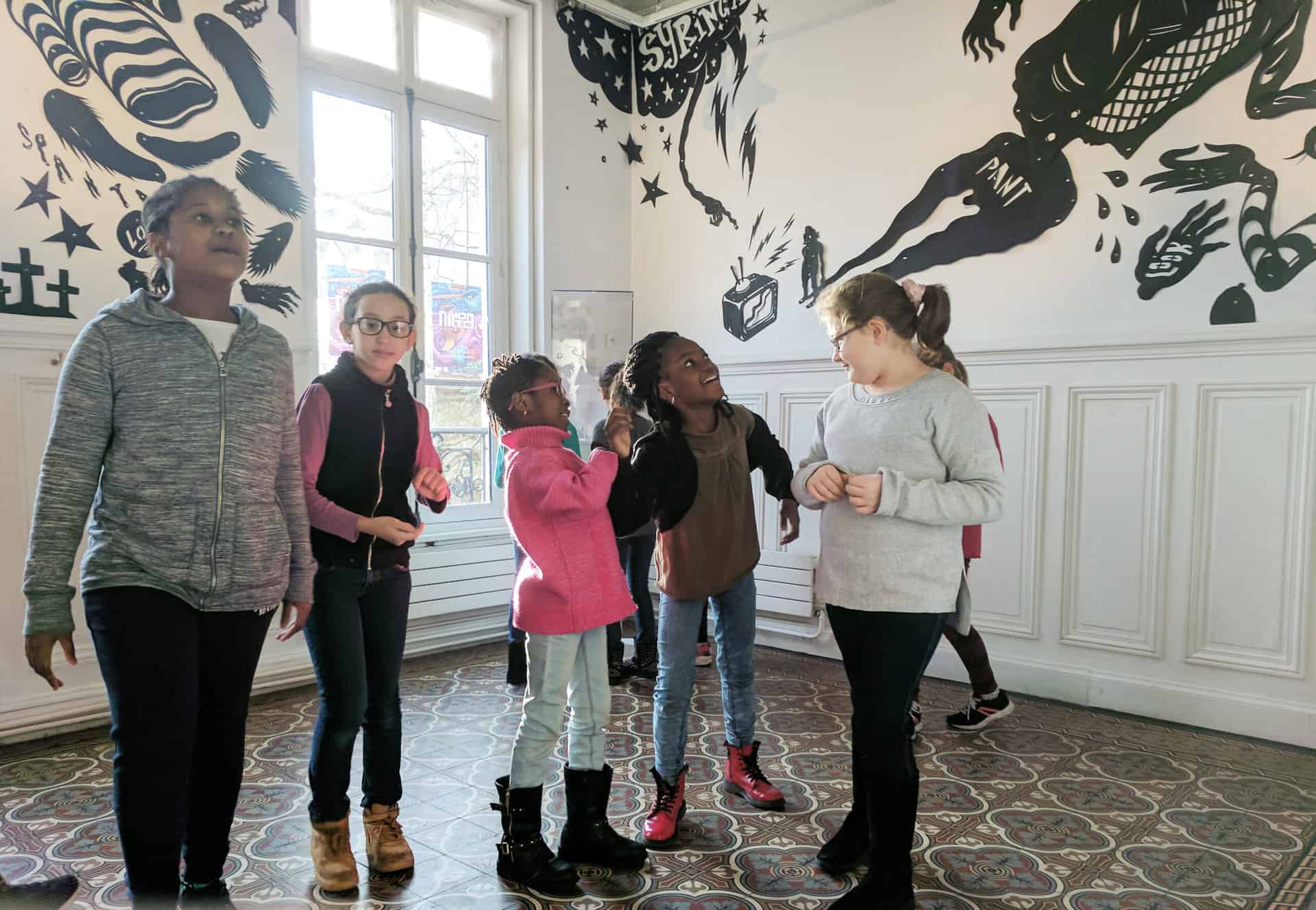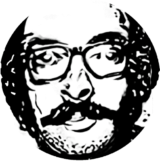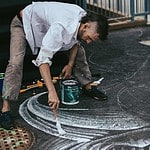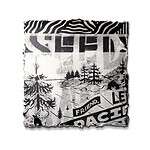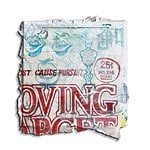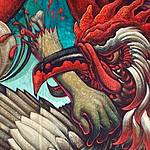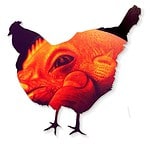
Vrai Tales From the Hôtel d’Anglemont
Vrai Tales: paper cutout installation / exhibition
This is a tale of shadow work puppetry; a non-linear story from the old Hôtel d’Anglemount. The show employed paper cut-out figures — like two dimensional puppets — to form the bulk of the solo exhibition.
The work makes reference to ‘silhouette art’, whose history dates back to the 18th century, as a popular and very affordable portraiture.
This is shadow work. It refers to a process of exploring and integrating the darker, hidden aspects of ourselves that are often repressed, or simply denied.
MY STORY
This highly experimental show was created for and at the Centre Culturel Jean-Cocteau, in Villes des Lilas (“City of Lilacs”), France, 2017.
It was a site-specific, fully immersive work of ’installation art’. This format is designed to transform the viewer’s experience of the space in psychologically dramatic ways. It blurs the boundaries between art ‘object’, and the space which it occupies.
This is my story, once upon a time.
PLATO’S CAVE — FIRST CHAMBER
The allegory of Plato’s Cave opens up to one corner of the room, where it introduces the core conceptual element of the show.
Per the allegory, light fills the cavern, casting shadows against the walls, for those chained within. This same light pours from the mouth of the cave, illuminating the silhouetted form of a man whose back is turned to the entrance.
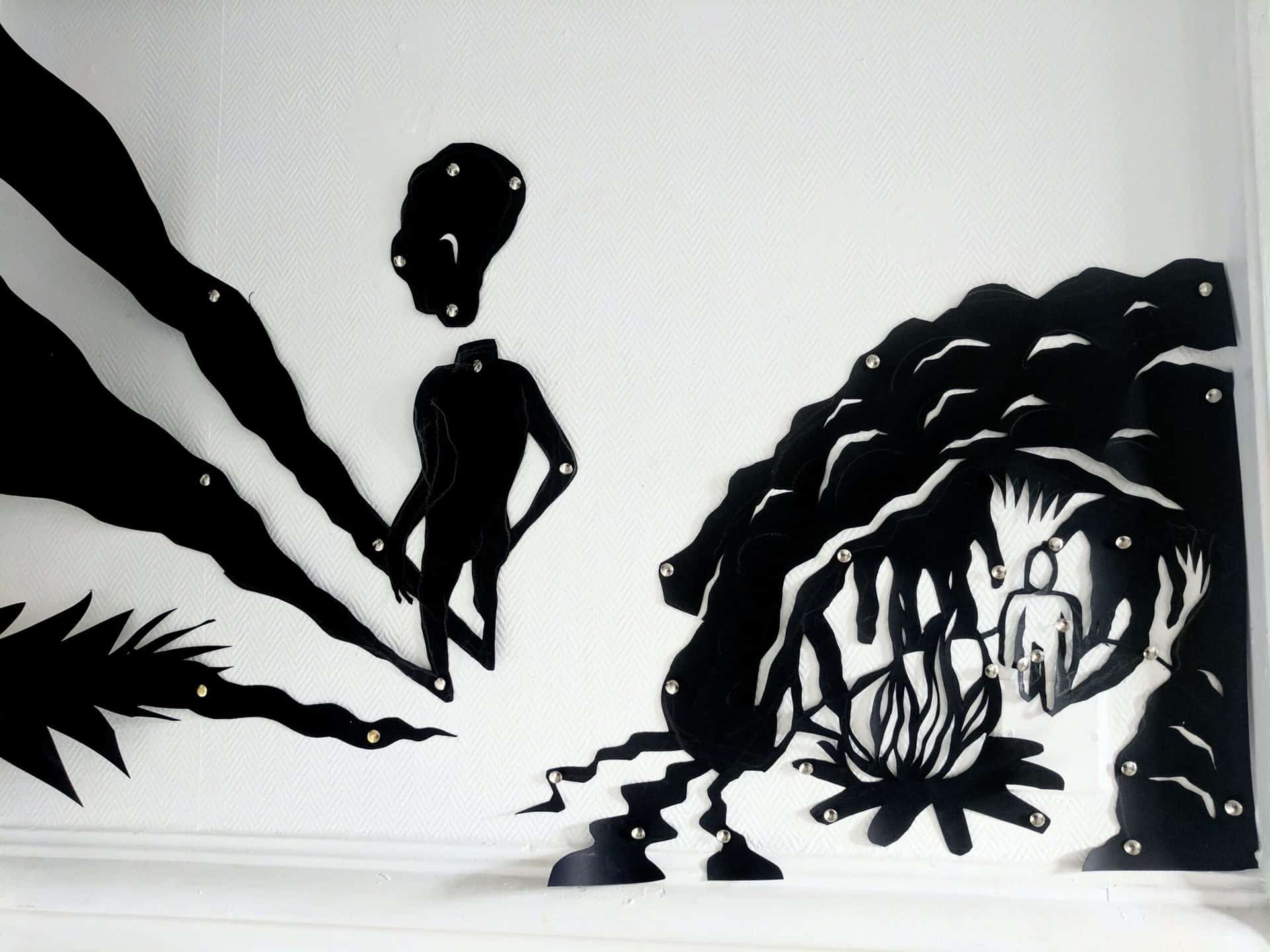
Having presumably left the cave, the man no longer perceives his reality as shadows projected upon the cave walls. Instead, he himself becomes the object of projection, spilling other forms of shadow throughout the gallery.
A man with a fox’s tail emerges from his feet, bearing the mischievous grin of the trickster. This character uses cunning, deceit, and humor to disrupt the status quo in order to bring about change. Sitting on the right hand of Sin, frowns a cold and wet crescent moon. Beside them, brass knuckles and the mark of questions unanswered.
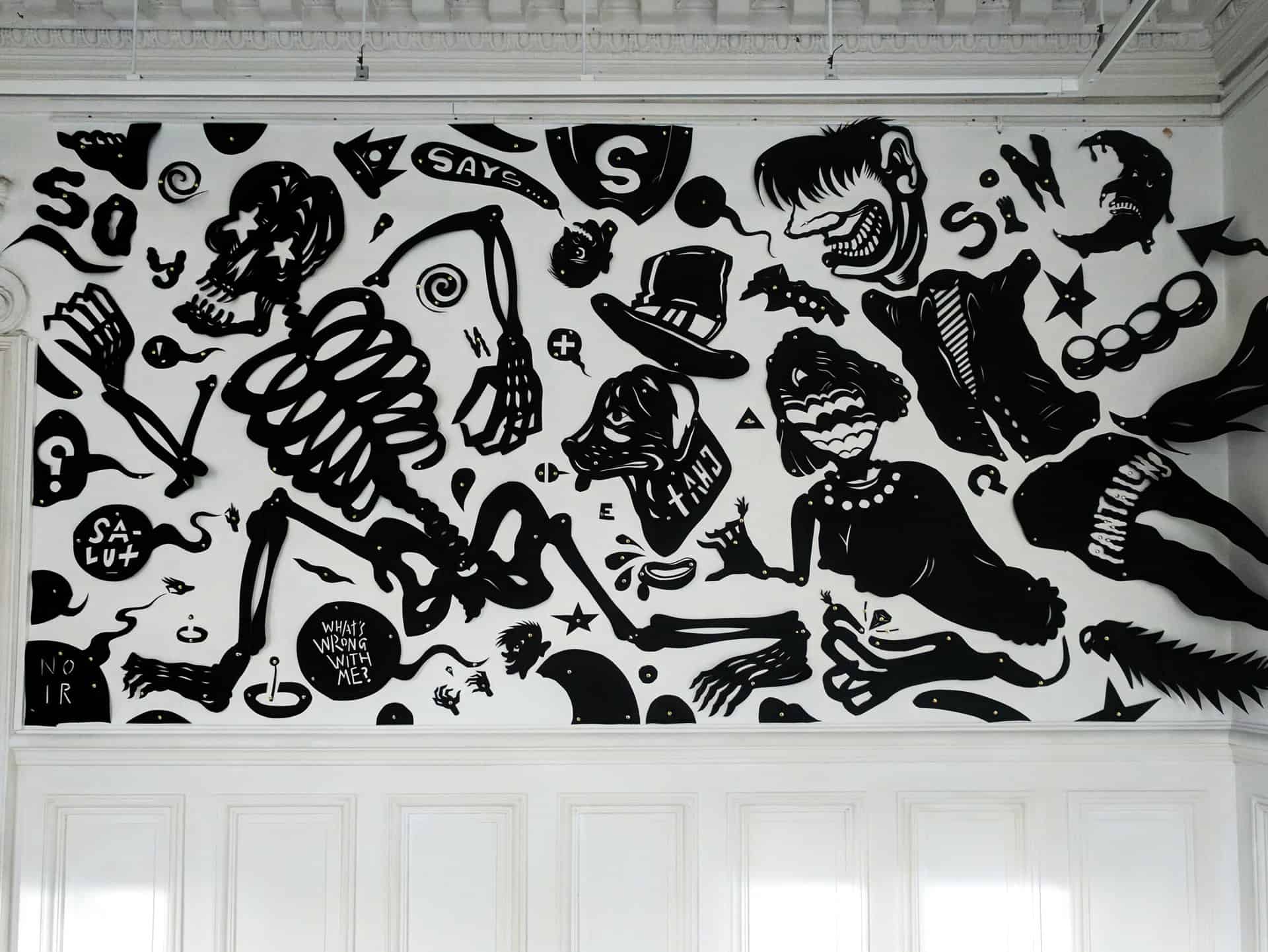
WHAT’S WRONG WITH ME
A woman with no face nor legs. She has lost her identity, and with it, the power to move forward. With pearl necklace, she clutches vainly at a diamond that can’t quite be reached with a disembodied hand.
A tophatted dog, head freshly severed from bloodied collar. The word “chat (Fr. for “cat”) is tattooed in reverse on his neck, making sense only when gazing into a mirror.
A very small head faces hands in distress, below a much larger whispered question: “What’s wrong with me?”
The crowned skeleton with star-studded eyes — Memento Mori — reminds us that death is the great equalizer. He leads us to the door, a threshold between two spaces, serving as a mirror to this room. Revelations.
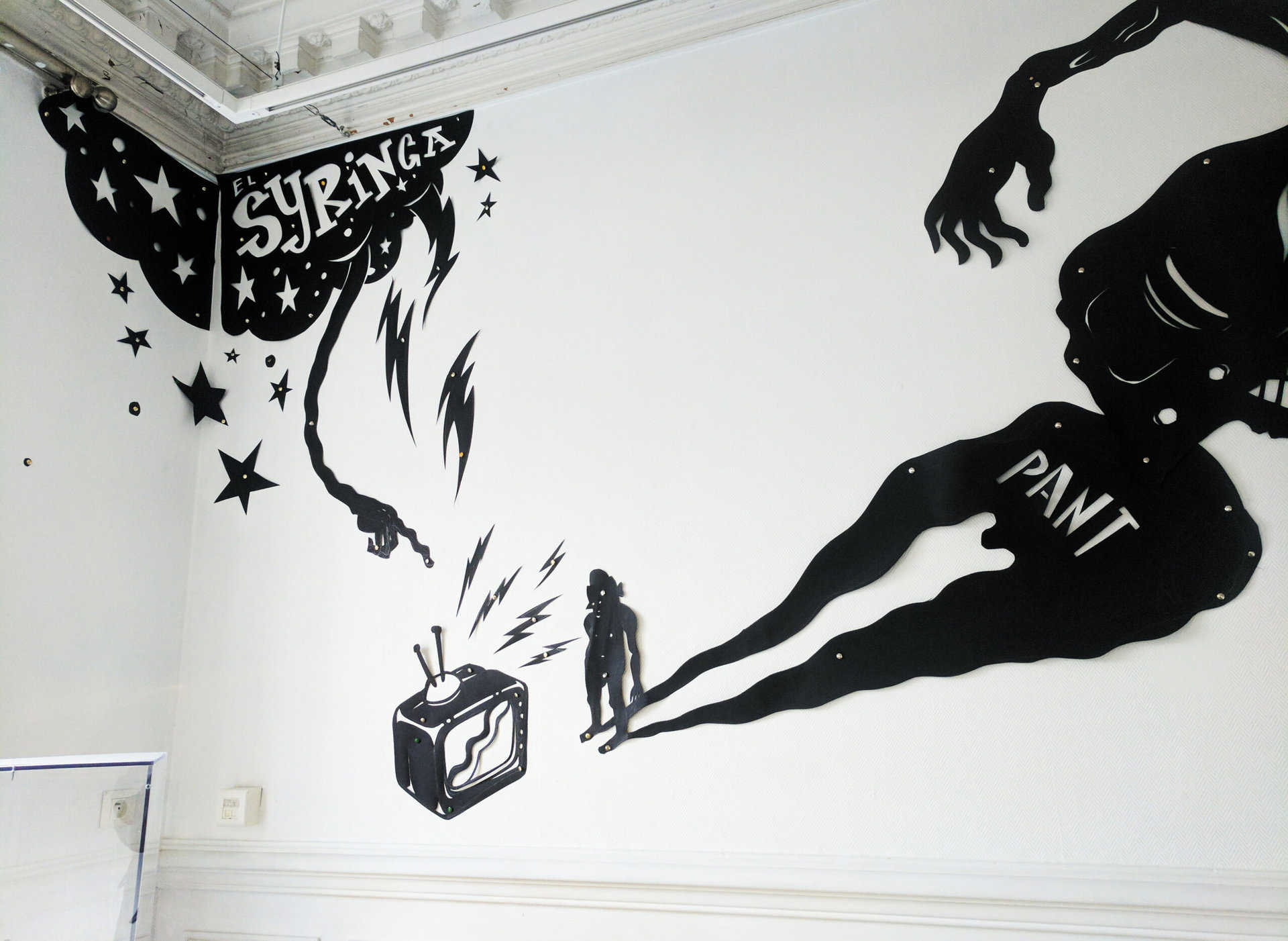
THIS IS NOT A PIPE
On opposing side of the room is the echoIt is not light that emerges from the cave, but bolts of lightning shooting out of an antennaed TV set, floating in space.
From the unseen forces of a cloud perched in the corner above (named “Lilac”), extends the spiritual interventions of the alchemical process, in the form of an arm and hand. It reminds that transformation does not take place solely on the physical plane, but perhaps more importantly, on the spiritual plane.
The glowing lights of man’s tell-a-vision programming cast a very different set of shadows. These shapes are beyond the reach of his sight.
His shadow wears a look of anguish, as it looks to the sky above. His gaze meets only the ceiling of another cave. From his mouth a jagged speech ‘bubble’; this is not a pipe.
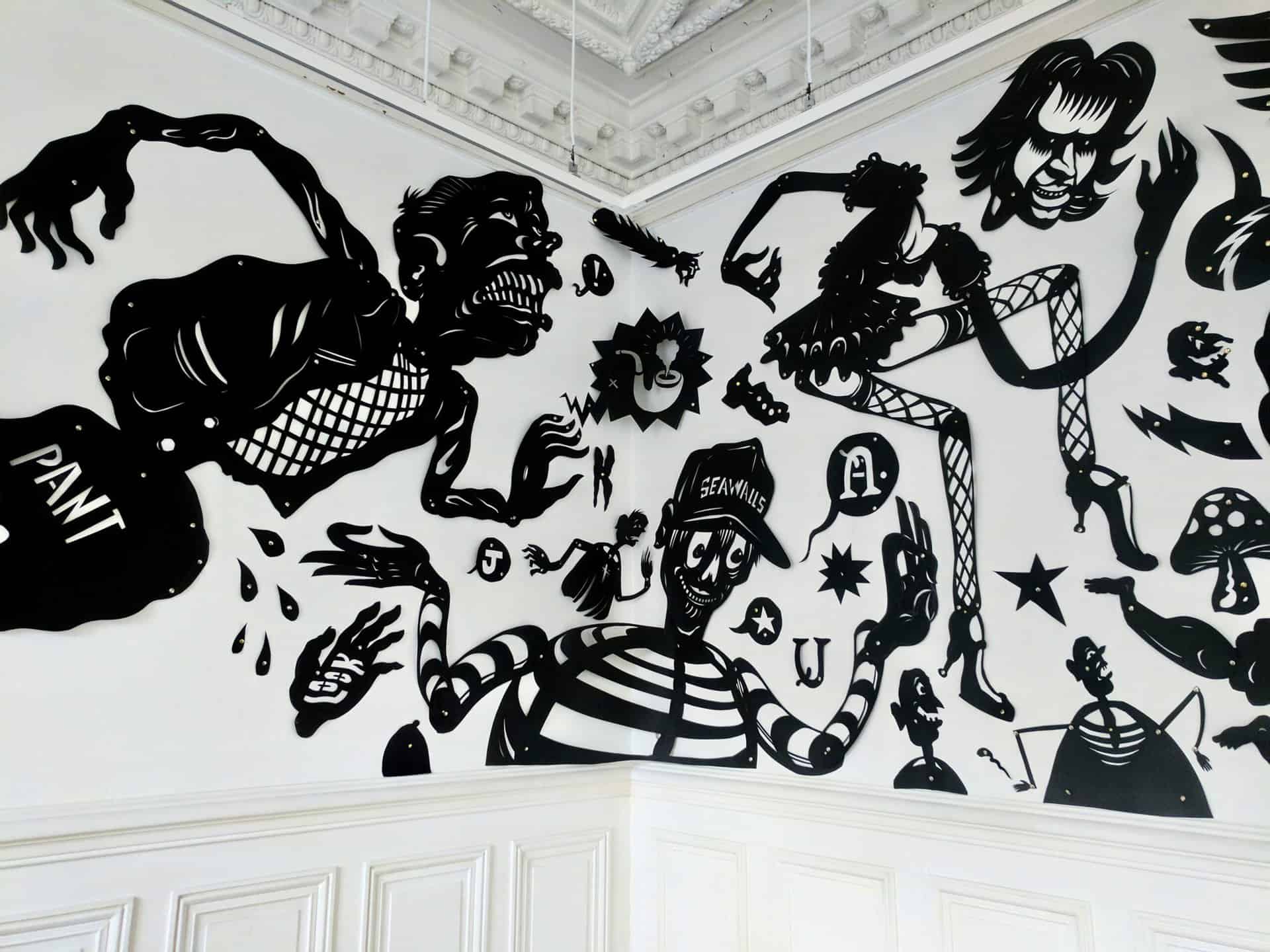
WHAT IS REAL?
What is real? A floating hand called “LOOK” needs attention, and support. Consider this carefully, while remaining aware of one’s surroundings and actions.
A man in a striped prison shirt grins with the glee of insanity. He is disconnected from reality, place behind bars. Hands held in holy mudra, SeaWalls cap perched on head, his crucifix bearing ghost whispers sweet nothing into ear. Above him dances a high-heeled woman in fishnet stockings. She is presumably the ‘prostitute’, who sells not her body, but her values and integrity for personal gain.
Look to deeper motivations, in contemplation of a foot called foot, whose physicality connects us to the earth.

The Harlot waves past the shadow side of her femininity, toward an absurdly muscular angel wearing white briefs. His face is the word, “face” (fr. “Visage”), hands bearing the wounds of his Christ.
The ghost of Magritte confuses our relationships between words and those things that are self-evident. This is a map, not the territory itself.
Words and images, reality and fiction; playing unplanned paper games with the nature of art and perception.
“Art is a lie that tells the truth”
Picasso
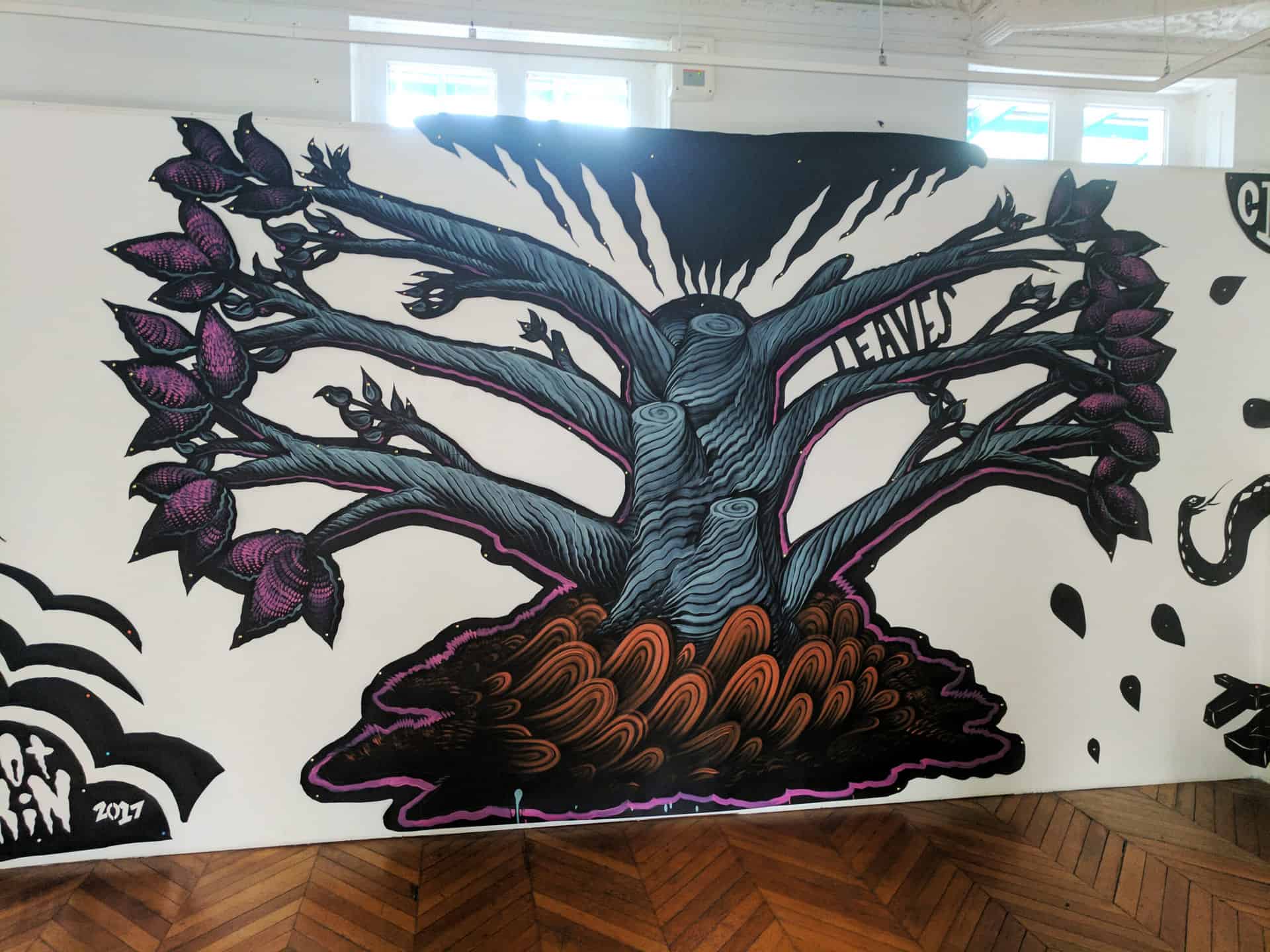
THE LILAC TREE — OF LIFE — SECOND CHAMBER
Ten branches, four severed sefirot, including the central, vertical access which supports the reproductive structures. The leftover language of the branches is in full pink blossom. The leaves have begun to fall. The ground around the tree heaves with the angry waves of a storm against trunk. Dark clouds radiate from a once green crown.
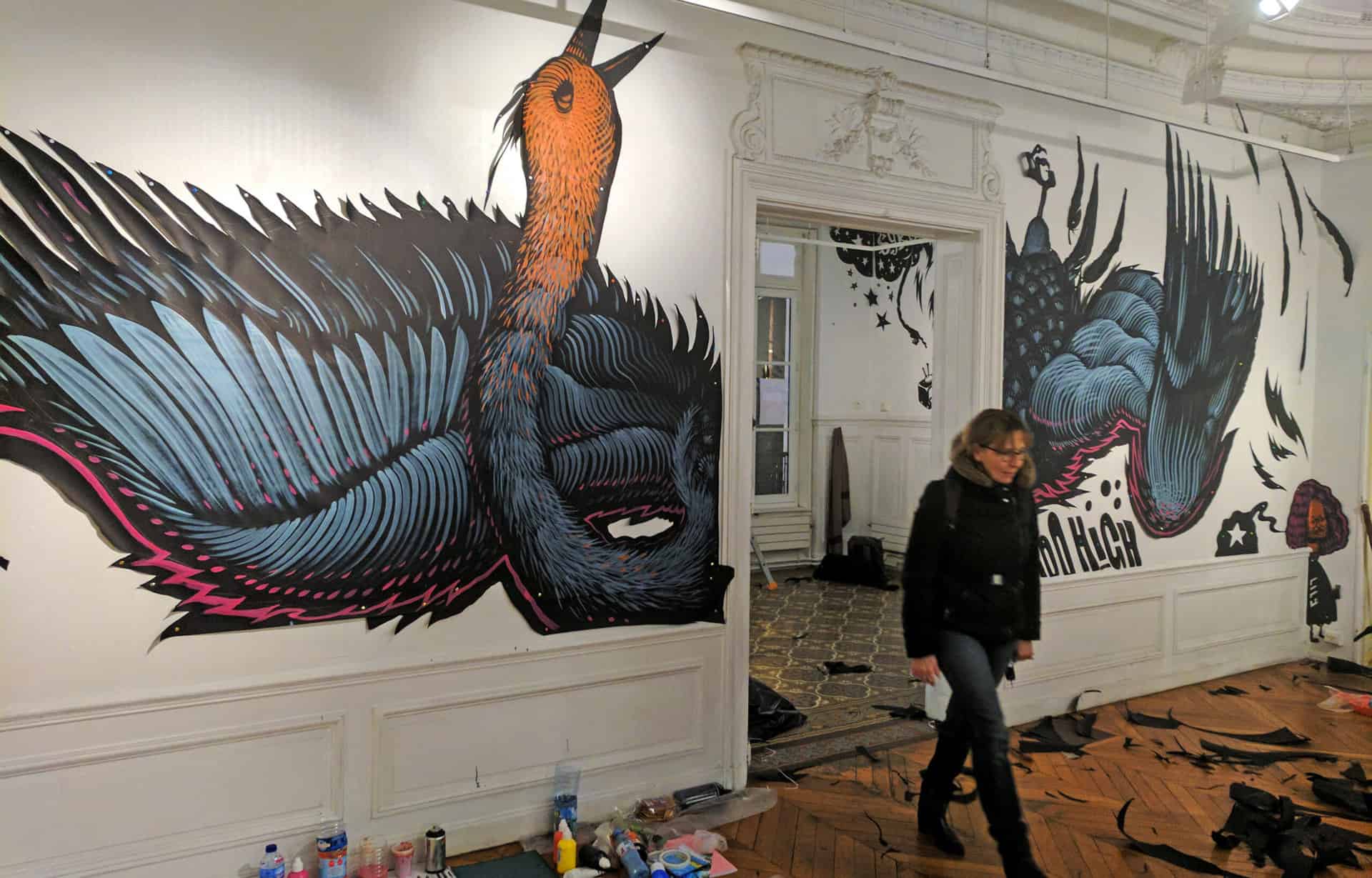
CRANE
Facing the tree on the opposing side of the room is a messenger. It lives between the earthly realm and spirit worlds. Crane, a graceful symbol of harmony with nature, has flown “too high”. Like Icarus, he is now caught between worlds, in free fall. This is a cautionary tale of hubris, when one disregards limitations.
These are the “Vrai Tales from the Hôtel d’Anglemount” says the bull, tongue-in-cheek. He stands defiantly over a barren and now purely decorative fireplace. His barrel belly slit from throat to root, revealing the ghostly faces of an unnamed and hungry multitude.
Foretelling stories indeed.
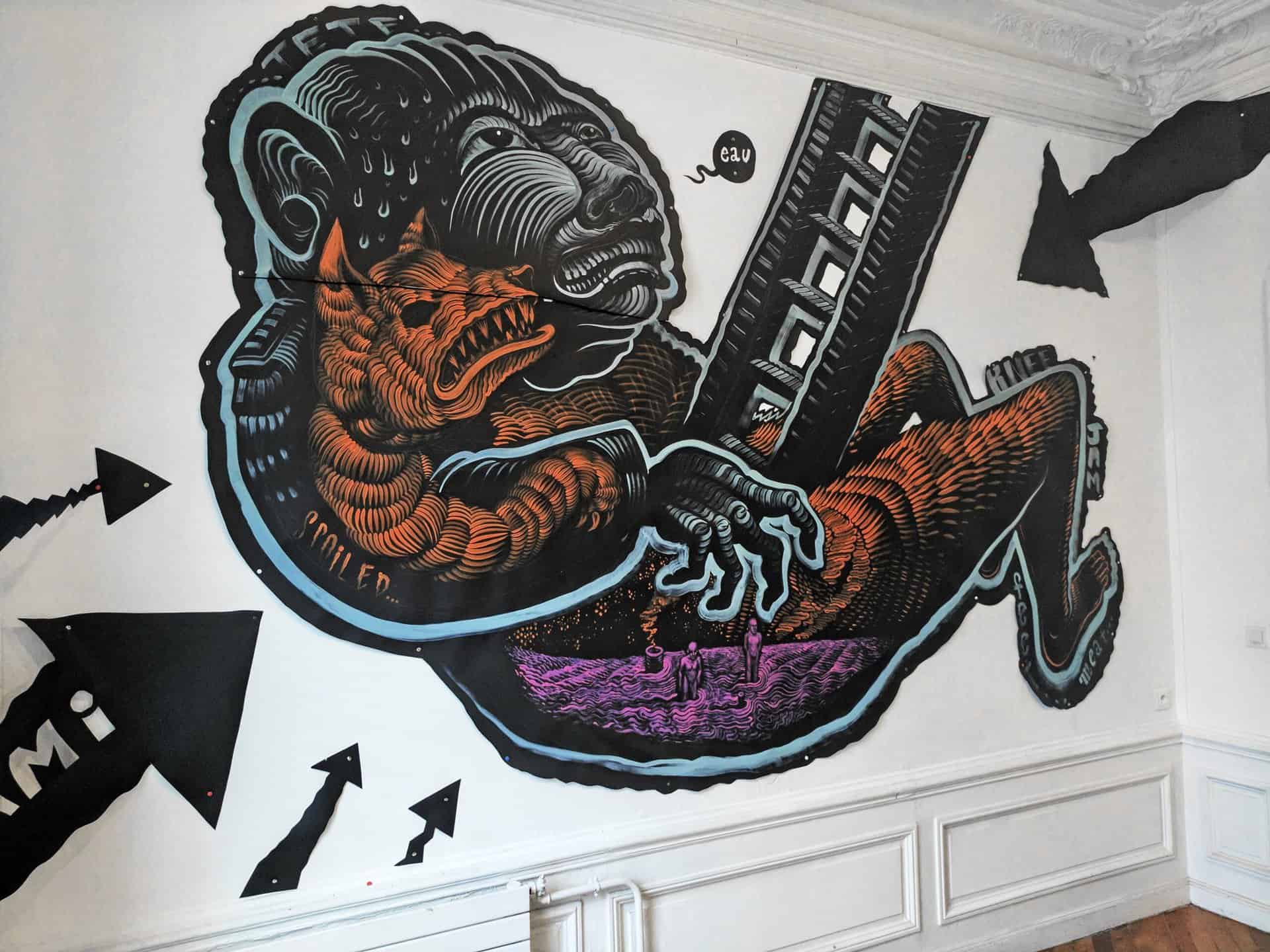
WATER — THIRD CHAMBER
An anguished man is found in free-fall, like the bird from the room before. Deeply unhappy with himself, he gasps weakly for “water”. Rebirth. A ladder protrudes from his belly toward the sky; a runged umbilical cord at core.
Inside lies a blind, angry wolf, whose matted fur becomes the red night skies of a sailors’ delight. Two naked men beneath the pelage, stand knee deep on flooded magenta plains. They’re looking for a fresh start, amidst smoking stacks of chimneys long buried.
Our hero is beset by arrows from every direction, lest the point be missed.
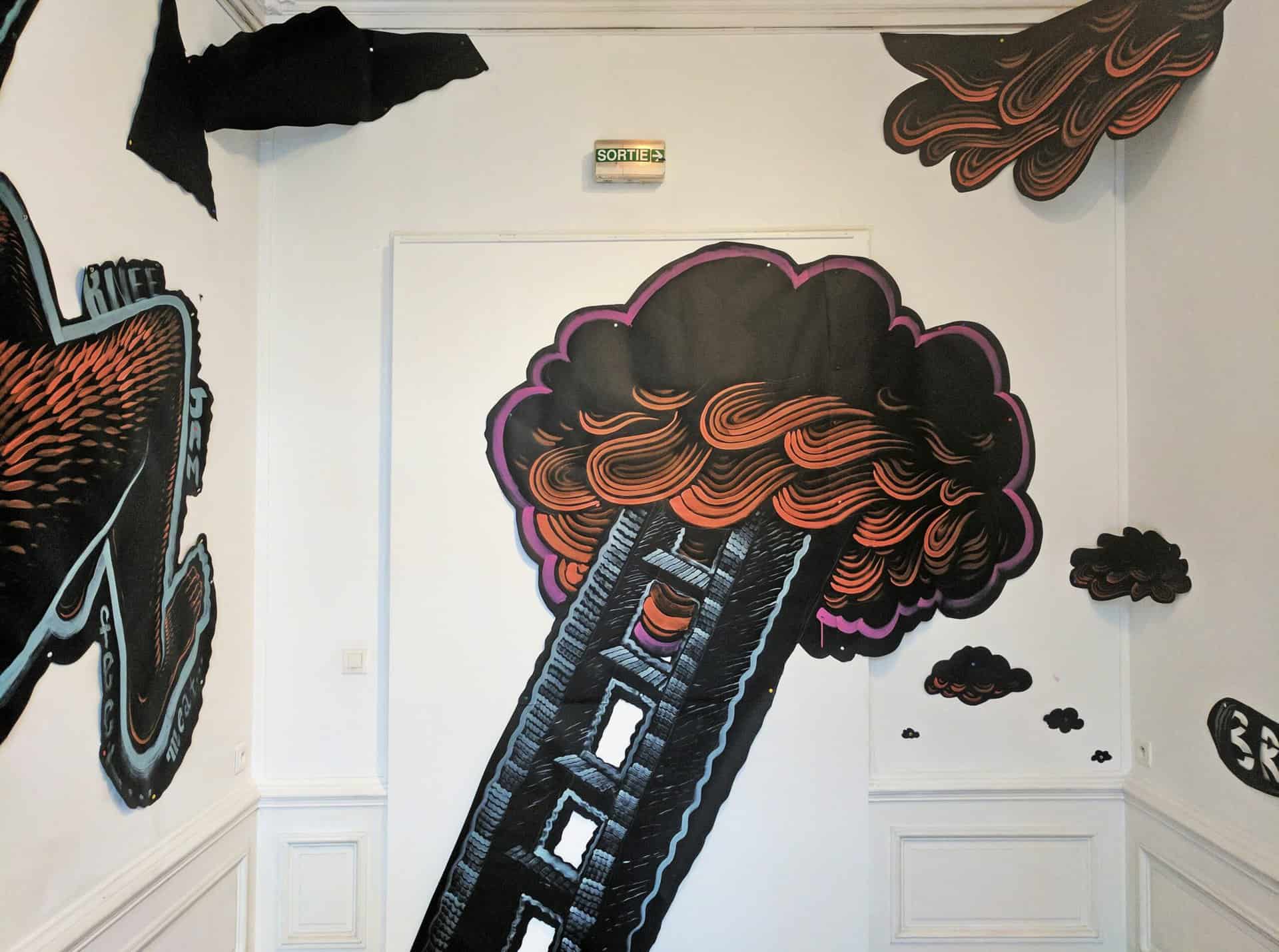
The ladder extends, as above so below. It’s leads back home, toward the cloud of prima materia; the formless, chaotic substance from which all things arise.
Thus the work begins … Magnum Opus … where raw material as humble as black rolls of paper, can begin the process of transformation.
The story draws to a close here, as the veil of illusion begins to part.
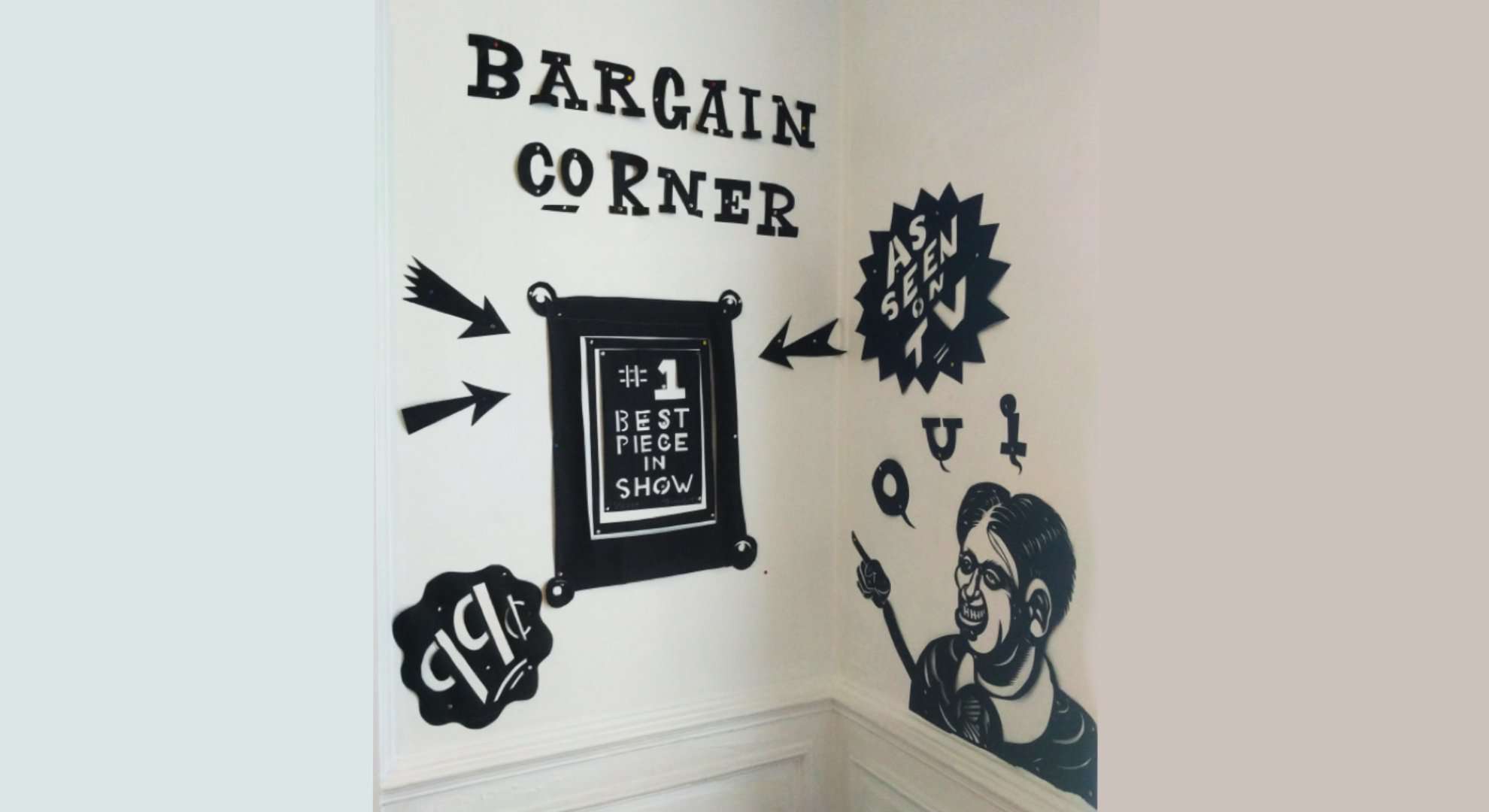
BONUS
What the Bargain Corner calls the “Best piece in show”
$.99, as seen on TV
Oui. I wonder what ever happened to all that work?

THE VALUE OF PAPER TO THE WORK OF ART
I have always loved working with paper.
It doesn’t have the ‘intrinsic value’ that other mediums seem to subjectively possess. However, its cheap and readily accessible nature allows for nearly endless forms of creative experimentation.
For this show, cut out of a ten day on-site production window, I used long rolls of black construction paper. These allowed me to radically push the boundaries of my practice, in ways both practical and philosophical.

IN THE END
I have no idea what happened to all of this work once the show came down. It seemed to have been received well, considering its context within an off-the-beaten-path cultural centre. I enjoyed the process enormously. These factors tickled two very important metrics of personal success, and with that I’m pleased
How was I to know at the time that I’d soon be stepping into this world of pain? Who was I to miss the writing made so crystal clear on these walls?
None of this work was ‘planned’ in advance. There were no sketches, only a creative process flowing freely from the heart.
I would not discover the full meaning of this work until writing these words, many years later.
Shadow work works in mysterious ways, and for that, I am grateful.
